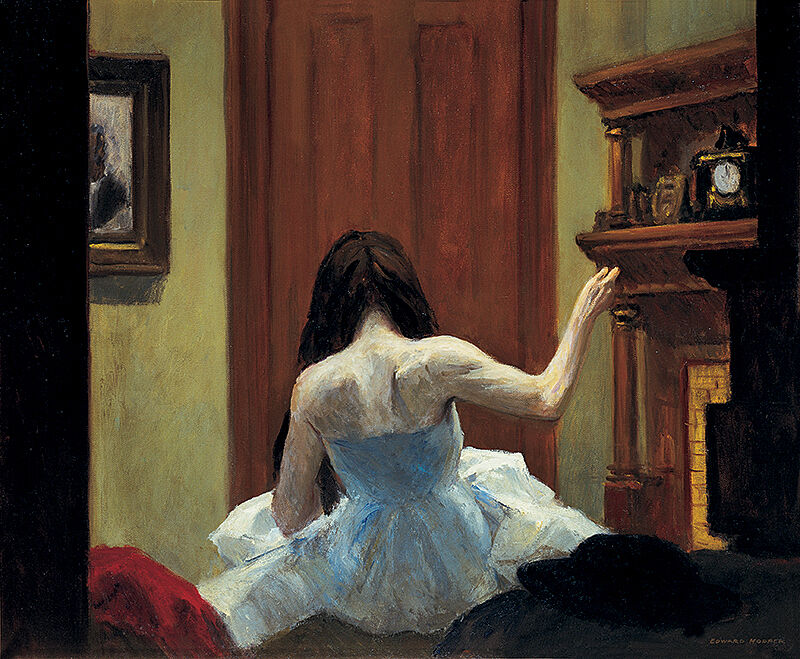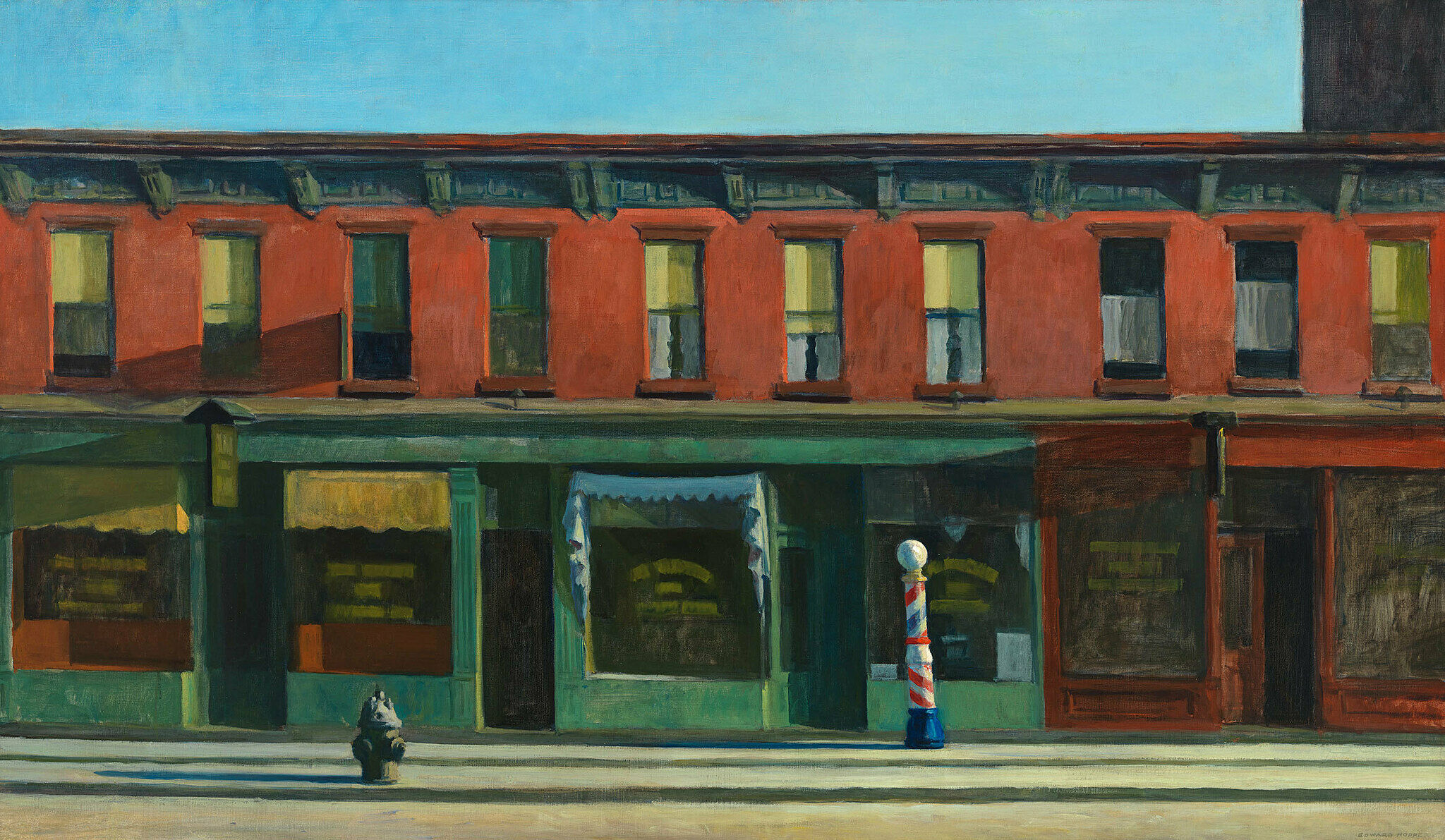Inside/Outside
“The inner life of a human being is a vast and varied realm and does not concern itself alone with stimulating arrangements of color, form, and design.”
—Edward Hopper
Hopper kept in his wallet the quote by Johann Wolfgang von Goethe (1749-1832): “the reproduction of the world that surrounds me by means of the world that is in me.” Living in New York City provided Hopper with ample opportunities for experimenting in his art with exterior and interior spaces, real, imagined and metaphorical. Through a process of observation and invention, Hopper worked in his art to create a subjective take on the outside world. At the same time, Hopper appreciated the limitations offered by the medium of painting, reflecting that, “you can’t project your mind onto the canvas because there are concrete things that interfere.”
Inspired by his nightly rides on the city’s elevated “El” train, he made etchings depicting the transit system, stations, and commuters. There were also elevated tracks along Second, Third, Sixth, and Ninth avenues that were later torn down in the late 1930’s and early 1940’s. Later, Jo even commented: “E loves to ride on trains''. Public transportation provided Hopper with glimpses of residential windows and images of intimate goings-on. Private, anonymous urban moments became an important theme in his work, as did the solitude that came with city living. New York Interior depicts the turned back of a woman sewing in a room from the vantage point of an El train rider. The vertical bands on either side of the work define the interior, making the viewer aware of the painting’s physical boundaries. At the same time, they crop the scene and highlight our own visual limitations as an onlooker, hinting at a larger story perhaps unfolding before and after this moment. Through his use of shadowing and compositional framing, Hopper turns what might otherwise be an ordinary scene into one that suggests a more layered narrative. Hopper once reflected, “If you could say it in words, there would be no reason to paint it.”
Early Sunday Morning, which Hopper documented as “7th Ave Shops”, was his first New York-inspired painting after the stock market crash in 1929. Less than a year before he painted it, Hopper saw Elmer Rice’s play Secret Scene that had a brownstone façade stage set designed by Jo Mielziner, which may have influenced the composition of this work. The painting’s panoramic view depicts a two-story nineteenth century building with multiple storefronts on the street level and residences on the floor above. Hopper combined observations of his Greenwich Village neighborhood with details he imagined like the long shadows running perfectly parallel to the buildings—something that would not happen on a north-south avenue. Hopper carefully selected the shape of each canvas, “so that it will do for the design, as nearly as possible what I wish it to do.” The looming black square in the upper right-hand corner, in contrast to the row of buildings, perhaps reflects Hopper’s dislike of the ever-increasing high-rises being erected. The artist reflected, “I just never cared for the vertical.” According to Hopper, the rowhouse was later torn down.
Activities
How would you create a visual metaphor?
With New York Interior, Hopper depicts his interpretation of a vignette rooted in accumulated New York City observations, resulting in a canvas that might be seen as a visual metaphor for urban isolation. Discuss with students the concept of a metaphor, a literary device that imaginatively draws a comparison between a usually concrete object and the more abstract idea it represents. Have students think about and select a metaphor that interests them. Challenge students to create visual metaphors. Display and discuss the artworks.
How would you transform one artform into another?
Early Sunday Morning was perhaps inspired by the play Street Scene, which the Hoppers saw together in 1929. His deep interest in theater and cinema made its way onto the canvas in many of his artworks. Have students select their favorite work in a particular artform (theater, dance, music, visual arts) and transform it into another. Invite students to present their works and discuss the successes and challenges they faced recreating their selected artworks.
How would you stage your New York City scene?
Prior to painting Early Sunday Morning, Hopper attended a theatrical production that had a nineteenth century building façade as a stage set. Have students imagine they’re creating their own theatrical or cinematic production. It will focus on their New York City neighborhood, another place they know intimately, or one that they have a deep connection to. Ask students to sketch drafts of their movie or stage sets. As an added challenge, invite students to create maquettes of their production sets and write scripts for their works.
How would you protest unwanted change?
Hopper reflected, “Early Sunday Morning was almost a literal translation of Seventh Avenue. Those houses are gone now.” The dark square painted in the upper righthand corner of the canvas is a subtle indicator of the urban development he witnessed in his Greenwich Village neighborhood. Encourage students to become careful observers of their neighborhoods, noticing the changes happening daily. Have them think about how they can be activists in their communities. Ask them to consider what they could do to affect positive change within their neighborhoods. Invite them to act upon their convictions.
Additional Resources
Whitney Museum: video, “Edward Hopper's New York: A Walking Tour”
Smithsonian, Archives of American Art: oral history interview with Edward Hopper, June 1959


